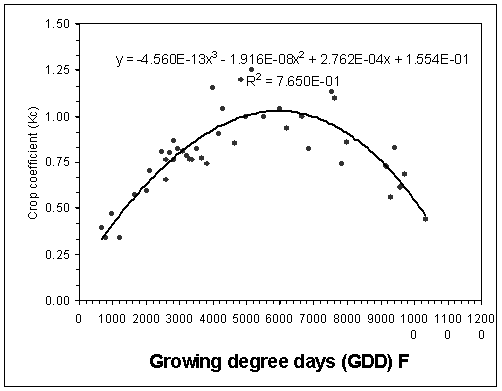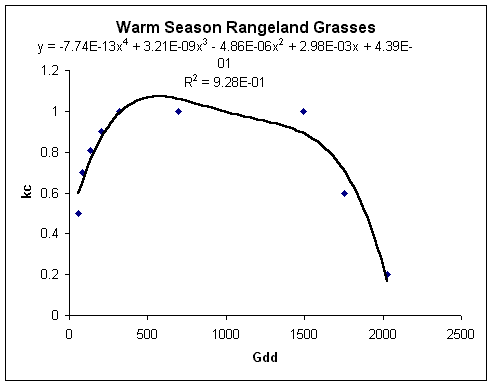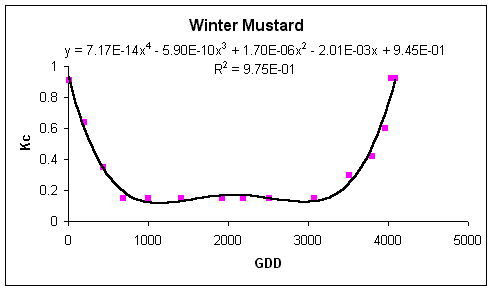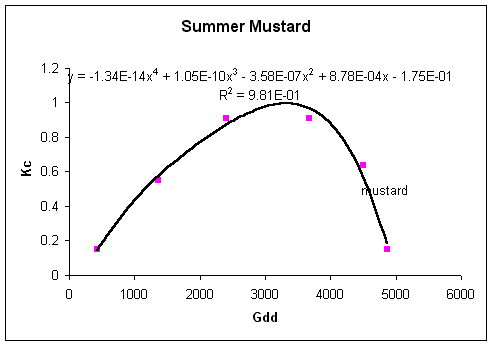Rangeland
Creosote
Crop Coefficient
New Mexico Crop Information Creosote coefficient (k) to calculate evapotranspiration (ET) where Et=k*Eto Eto = reference evapotranspiration or potential evapotranspiration referenced to grass

Crop Coefficient uses growing degree days (GDD) accumulated from planting based on the averaging method of calculating GDD with no maximum cutoff temperatures and a base and lower cutoff temperature is 0C. The crop coefficient represents the water loss per projected area of the creosote canopy. The crop coefficient applies for day length greater than 11 hr. Set the crop coefficient to 0.25 for day lengths shorter than 11hr.

Warm Season Grass
Crop Coefficient
New Mexico Crop Information Warm Season Grass coefficient(k) to calculate evapotranspiration(ET) where Et=k*Eto Eto = reference evapotranspiration or potential evapotranspiration referenced to grass.

Crop Coefficient uses growing degree days (GDD) accumulated from planting based on the averaging method of calculating GDD with a maximum cutoff temperature of 86 F and and lower cutoff temperature of 50 F and a base temperature is 50 F. The reference evapotranspiration was calculated using Samani's procedure and the temperature data from Newell South Dakota 1971. The rangeland grass plots were irrigated to represent non stress conditions.
References
- Crop Coefficients For Rangeland. Journal of Range Management. 43, no. 6 (Nov 1990): p. 482-485.
Mustard
Crop Coefficient
New Mexico Crop Information Winter and Summer Mustard coefficient (k) to calculate evapotranspiration (ET) where Et=k*Eto Eto = reference evapotranspiration or potential evapotranspiration referenced to grass.


Crop Coefficient uses growing degree days (GDD) accumulated from planting based on the averaging method of calculating GDD with a maximum cutoff temperature of 68 F and a minimum and base temperature is 50 F for winter mustard and calculating GDD with a maximum cutoff temperature of 86 F and a minimum and base temperature is 50 F for summer mustard. Calculate GDD from beginning of the year for both winter and summer mustard. Reference: Sharma, D. K. Kumar, A Criteria for scheduling the irrigation of mustard Tropical Agriculture 1993 70:1 16-21